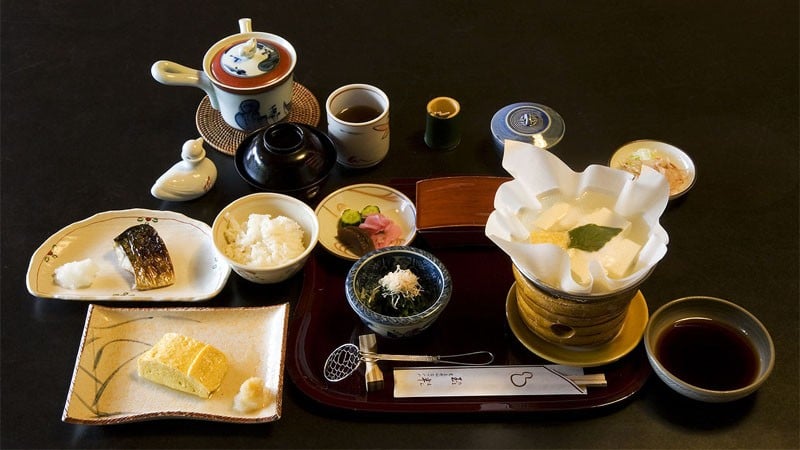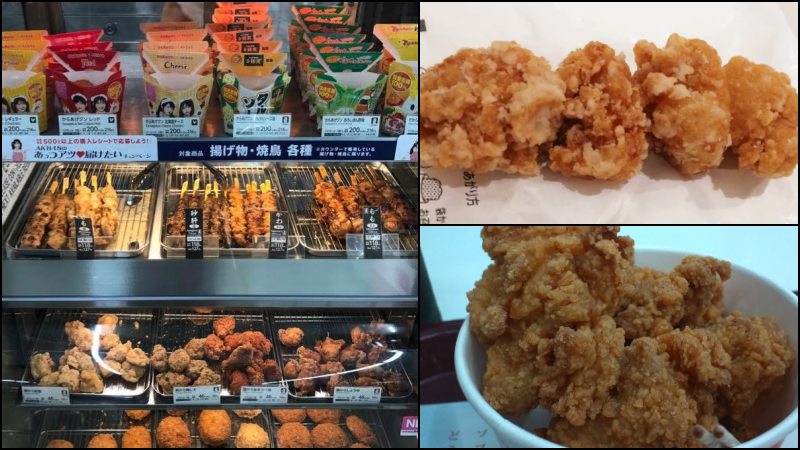The Japanese have different ways of drinking coffee, many follow the western way of eating a bagel or something light, because it is quick and cheap. But traditionally the Japanese breakfast is a big nutritious menu, similar to a lunch. In Japan breakfast is called “Asagohan”.
The word Asagohan [朝ご飯] does not mean breakfast like in Brazil. Asahogan literally means "morning rice". This name makes perfect sense because in Japan it is common to eat rice for breakfast.
The foods that make up traditional Japanese coffee are practically the same as for lunch called Hirugohan [昼ご飯] and dinner called Bangohan [晩ご飯]. In this article, we are going to see a little about the types of Japanese breakfast.
Table of Content
Asahogan - Traditional Japanese Breakfast
A small traditional breakfast consists of steamed rice, miso soup, and various dishes such as grilled fish, tamagoyaki (omelet), tsukemono (preserves), Japanese-style pickles (such as takuan or umeboshi), nori (dried seaweed) , Natto and others.
Drinks are usually milk, coffee, green tea, English tea, and orange juice. You can try traditional Japanese coffee at most Japanese restaurants that are open in the morning.

Other ingredients that usually accompany a traditional Japanese breakfast are:
- Fried pork with ginger.
- Vegetable soup;
- Sunomono - Sweet and sour cucumber salad;
- Oyakodon - Chicken and eggs on rice, with miso soup;
- Sardines.
- Okayu - Rice porridge;
- Bacon, sausage and other meats.
- Some toasts;
- Fried chicken with curry.
- Corn soup;
- Fried tofu and miso soup wakame.
- Ozoni - soup with mochi;
- Pickled peppers.
- Cabbage cooked in butter.
- Tanuki udon;
Some of the aforementioned ingredients can be easily mixed into a personalized breakfast.
If you want to try a traditional Japanese breakfast, you can stay at a traditional inn like Ryokan. They serve a full traditional coffee. Some western hotels tend to serve a mix of western and traditional coffee.
Read also: Ryokan - The charming Japanese inns
Breakfast on the streets of Japan
In convenience stores, you can buy various snacks for your coffee such as, for example: Nikuman, Onigiri, Karaage and Oden. Not to mention the processed products like different snacks, Western breads, and even the unusual yakisoba bread.
On your way to work you can stop at a vending machine and grab a hot or cold drink. I usually took a chocolate with milk and coffee, I also had some good vitamins and energy drinks to give that turn.
See too: Jihanki Shokudo - Automatic vending machine restaurant
The most consumed bread in Japan is called Shokupan similar to a loaf of bread. The bakeries in Japan are incredible, some offer all-you-can-eat-in options, a “Self-service” where you choose what you want, and countless varieties of breads and sweets.
We recommend reading: Japanese bakeries and Japanese breads
Usually some restaurants adapt to the time to serve food from their menu. Typical Japanese meals can be listed as follows:
- Breakfast: Miso soup, steamed rice, Natto, and seaweed salad;
- Lunch: soba noodles in Dashi-based broth, grilled tuna, kale salad, and cooked vegetables;
- Dinner: Udon noodle soup, fish cakes, edamame, and pickled vegetables;

Western breakfast in Japan
As in the West, Japanese children often eat cereal with milk, hot chocolate and fruit juice. Adult Japanese (especially younger ones) often eat toast with butter or jam, eggs and vegetable slices, and often drink coffee or juices.
Other ingredients that usually accompany a Western-style Japanese breakfast are:
- fruits;
- Konbini bread;
- Yogurt;
- Bread with cheese and cream.
- Omelette with spinach.
- Onigiri;
When I stayed at the Japanese house, they made a big feast for a single breakfast. There were fruits, they fried some sausages, there were several breads, ham, mozzarella, yogurt, juice, tea and coffee. There was also Misoshiro.
We recommend reading: Misoshiro - The delicious Japanese Soy Soup

Japanese people who usually have a Western or personalized breakfast don't need to go to the trouble of making it, they go straight to a konbini or restaurant, this makes the choices endless.
If a Japanese person wants to eat a Cup Noodle, snack, a Nikuman, or a rice ball (very common), they can just buy it. If a Japanese person wants, they can eat something different every day.
And you who live in Japan? What do you usually have for breakfast?
